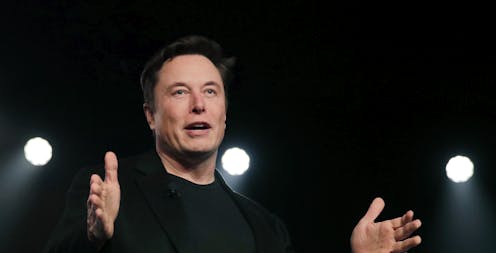A case study in what not to do
- Written by Libby (Elizabeth) Sander, MBA Director & Assistant Professor of Organisational Behaviour, Bond Business School, Bond University

As a case study in how to implement organisational change, Elon Musk’s actions at Twitter will go down as the gold standard in what not to do.
Among other things, the evidence shows[1] successful organisational change requires: a clear, compelling vision that is communicated effectively; employee participation; and fairness in the way change is implemented. Trust in leaders is also crucial[2].
Musk, the world’s richest man, appears in a hurry to make Twitter into a money-spinner. But it takes time to understand the requirements for successful organisational change. Two in three[3] such efforts fail, resulting in significant costs, a stressed workforce[4] and loss of key talent.
Change management never quite goes to plan. It’s hard to figure out whether Musk even has a plan at all.
Musk’s ‘extremely hardcore’ style
Since taking over Twitter on October 27, Musk has stopped employees working from home, cancelled employee lunches, and laid off[5] about 3,700 employees – roughly half of Twitter’s workforce. Many realised they had been sacked when they could no longer access their laptops[6].
Just days later it emerged[7] that Musk had a team of snoopers comb through employees’ private messages on Slack, firing those[8] who had criticised him.
Then, on Wednesday last week, Musk sent an ultimatum to staff to pledge commitment to a new “extremely hardcore” Twitter that “will mean working long hours at a high intensity”. Employees had until 5pm the next day to accept, or take a severance package.
About 500 staff reportedly wrote farewell messages[9].
Layoffs and restructuring are common in organisational change. But the way they are managed has significant effects[13] on those who are leaving, as well as those who remain. If you want employees to be committed and to respond to a crisis, telling them they are lazy and threatening them won’t help.
Read more: Thinking of breaking up with Twitter? Here’s the right way to do it[14]
Choice matters
But what about SpaceX and Tesla – the companies on which Musk has built his fame and fortune? Doesn’t their success prove he is a good leader?
Not so fast. There is a big difference between a mission-driven company like SpaceX and a platform like Twitter.
When there is a common mission to achieve something extraordinary or which hasn’t been done before, employees[15] will often willingly work extremely long hours in difficult situations.
They will choose to go above and beyond and work long hours if they feel aligned with the organisation’s purpose or that their work matters. But the key point here is that they choose.
As one Twitter employee[16] tweeted after Musk’s “hardcore” email:
I didn’t want to work for someone who threatened us over email multiple times about only ‘exceptional tweeps should work here’ when I was already working 60-70 hours weekly.
Musk ignores the fundamentals
Both Tesla and SpaceX have many unhappy employees[17], with lawsuits filed over working conditions and Musk’s management style.
He has been commended for his thinking[18] on iterative design and solving engineering problems. Challenging old models that may no longer be useful is important. But the fundamentals[19] of leadership and organisational change are still essential – and on these, Musk falls woefully short.
Read more: What Elon Musk's destruction of Twitter tells us about the future of social media[20]
While his employees – real people who aren’t billionaires and who have rent or mortgages to pay – were grappling with what being “hardcore” even means, and how that might impact their ability to have a life outside work, Musk was tweeting about his poll on whether former US president Donald Trump should be allowed back on the platform.
Then, after Trump declined to return, Musk tweeted the following:

















